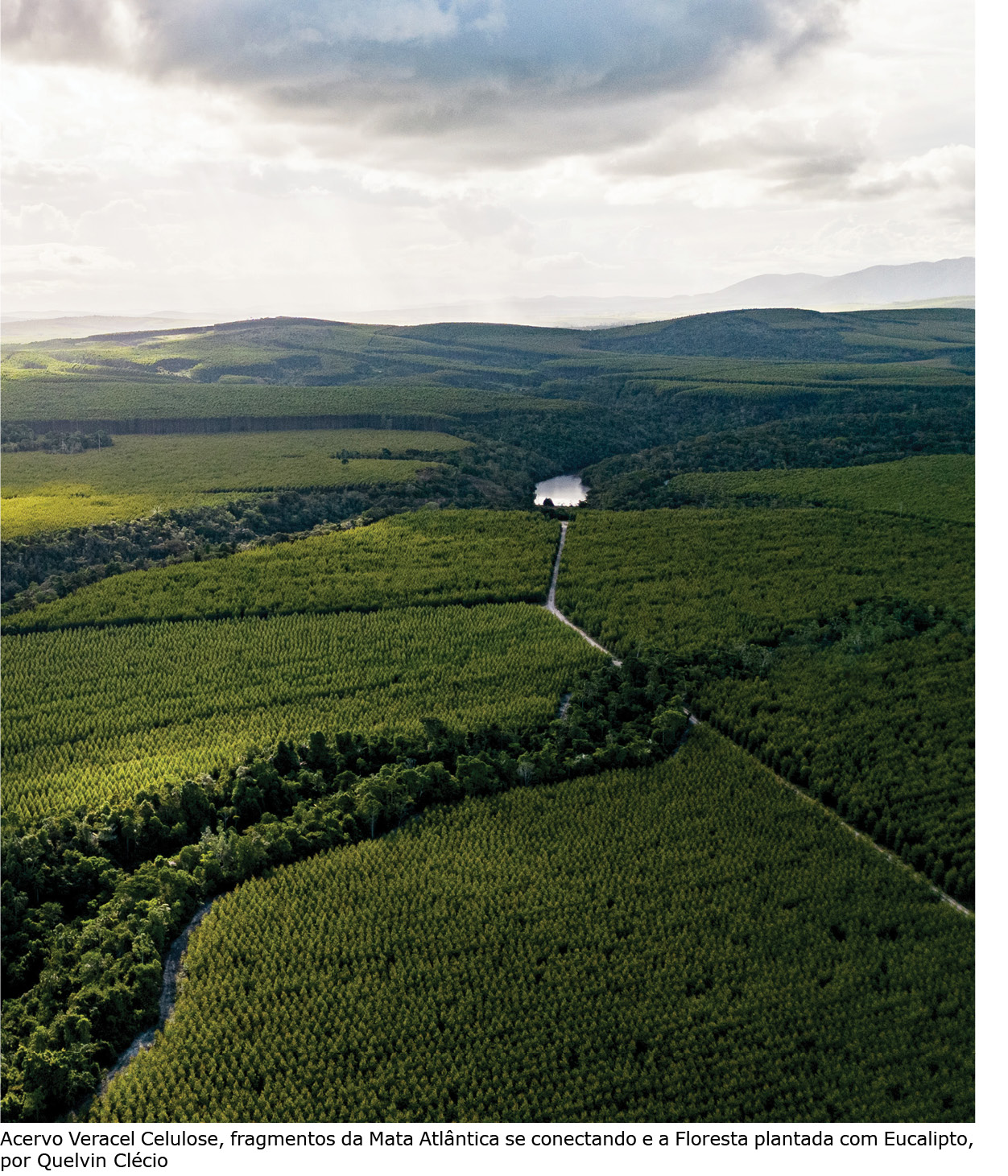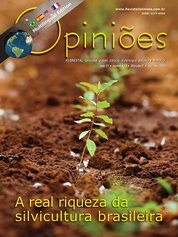Virgínia Londe de Camargos
Environment and Integrated Management Manager at Veracel Celulose
OpCP74
Ecological corridors and new strategies forest restoration
The search for new strategies for environmental conservation has been addressed and discussed around the world. In this context, ecological corridors are increasingly emerging as a viable alternative for maintaining biodiversity.
The premise of the corridors is to bring together the areas that separate forest fragments or Conservation Units, considering land use in landscape planning. Effective, the corridors are created based on studies on the movement of species and the distribution of their populations. Based on the information obtained, they are guided, aiming to target the fauna, thus minimizing the environmental impacts of human activities.
 As an example, we can mention the region where Veracel operates, in the south of Bahia, where the largest vegetation remnants are located, predominantly, in areas with lower agricultural potential, either due to the type of soil or the land unsuitable for agricultural purposes. As a result, there was a fragmentation of the region's native vegetation, something that directly affected the rich local biodiversity. It is believed that, in some cases, the result of this fragmentation may have been the extinction of several species.
As an example, we can mention the region where Veracel operates, in the south of Bahia, where the largest vegetation remnants are located, predominantly, in areas with lower agricultural potential, either due to the type of soil or the land unsuitable for agricultural purposes. As a result, there was a fragmentation of the region's native vegetation, something that directly affected the rich local biodiversity. It is believed that, in some cases, the result of this fragmentation may have been the extinction of several species.
The forest restoration process is very important for uniting the remaining areas. By reconnecting these areas, the formation of forests allows the reestablishment of connectivity, enabling the flow of fauna and flora through these corridors and, consequently, will also increase the genetic variability of species, helping to perpetuate them in space and time.
However, to increase the success of the process, the implementation of corridors needs to be accompanied by other conservation strategies, such as monitoring fauna and flora, so that restoration can be truly effective and expanded over the years.
An example of the implementation of corridors with other strategies is the Veracel Restoration Program , which was created in 1994 and has already restored more than 8 thousand hectares. Its objective is to restore areas owned by the company, forming ecological corridors and conserving riparian forests, springs and soil.
Furthermore, the Program provides environmental conservation and local landscape ecology, a valuable tool for understanding issues related to biodiversity conservation, natural resource management and land use planning. This allows the company to gain important insights for making sustainable decisions.
Currently, the company's goal is to restore 400 hectares of Permanent Preservation, Legal Reserve and Additional Protection Areas. Additional Protection Areas are not used for planting eucalyptus due to certain characteristics that restrict the operation, such as the area's steepness. Even so, these are not areas that should be designated for legal reforestation obligations.
The company uses different restoration methodologies and, more recently, adopted nucleation techniques, a strategy that makes it possible to increase local biodiversity by following the natural stages of ecological succession in a native forest. That is, instead of planting trees across the entire area at once, we start in a few strategic places and allow the forest to spread naturally.
This methodology allows planting 5, 9 or 13 species with pre-established distances within and between nuclei. As trees grow at these nucleation points, their seeds naturally spread to other surrounding areas, and more trees begin to grow. This gradually creates a forest.
Another strategy implemented by Veracel it was a system for evaluating the quality of the restoration.
This point contributes to improving the process, by applying eucalyptus management indicators in ecological restoration operations and, above all, in monitoring and managing the quality of the company's operations. Some indicators (survival index, diversity index, growth index, etc. ) are fundamental to measuring the effectiveness of the restoration and acting at the right time to correct possible deviations, increasing the success and efficiency of the process.
Still in the case of eucalyptus, mosaic planting contributes to environmental conservation, as the plantation also functions as a corridor, even if temporary, for species to move from one forest fragment to another.
For the success of this initiative, it is important to harvest the wood in a mosaic manner, as a large area should not be left without vegetation cover to avoid causing isolation of the species during the planting period and growth of new trees. At Veracel, we cut no more than 500 hectares of eucalyptus continuously, so that we can always maintain these temporary corridors.
Another important point to consider is the control of chemicals in restoration, a factor that generates a lot of discussion. Many areas are located in pastures, where resilience is low, and facing competition with grasses is crucial for the survival and growth of seedlings, as well as for the natural regeneration of native shrub and tree species. As these are areas destined for environmental conservation, the use of herbicides and anticides in processes has been questioned, mainly in areas of Permanent Preservation Areas and Legal Reserves.
There are numerous safe products used in eucalyptus forestry, but there is still a lack of studies on their effectiveness in planting native species and there is a lack of acceptance by environmental agencies.
The legislation is very restrictive, and the products used do not always meet the requirements for planting different native species. On the other hand, not using herbicides, in addition to being less efficient, makes restoration extremely expensive, since weed control has to be done manually (mowing) and, often, more than once, due to regrowth. of weeds, being less effective than in the case of herbicide.
Thinking of a solution, in 2022, Veracel carried out an experiment using a biobait, an ecological and natural alternative, replacing chemical pesticides. The result was very promising and, now, in 2023, we are expanding its use to verify its effectiveness on a large scale. In the process, some challenges were identified, such as finding suppliers that would meet the necessary demand for the product to reach the annual goal of the restoration program.
As we are still in the testing phase, we intend to use our relationship spaces for the alternative to be further studied by the forestry sector in the restoration of fragments, so that the production of these biobaits can be expanded.
Even with these new techniques, there is still a large margin for evolution in the management of ecological restoration processes, especially in the structuring of operational and quality indicators and the adoption of new management practices. There are also opportunities for the use of new sustainable and ecologically recommended inputs, among other possible points for improvement.
Although the restoration process began in the 1940s with the first Forest Code, it is only in the last 30 years that we have started to hear more about these methods. Still, we realize that, as a society, we continue to crawl and learn from mistakes and successes.
When we talk about restoration, it's right that there is no protocol or cake recipe that can be widely used, considering that each area is unique, and all environmental factors need to be considered, such as precipitation rates, soil types, proximity to fragments, the biome in which the area is located, among other characteristics.
Furthermore, only phenological studies of native species, that is, the study of the different growth phases of plants, both vegetative and reproductive, are not sufficient to guide the definition of native species, in terms of adaptation, flowering, seed dispersal etcetera. It is necessary to go further and bring more and more new strategies that expand our knowledge and the effectiveness of our actions.
Another thing worth highlighting is that the wave of restoration is just beginning. Carbon credit is an option that is gaining momentum, encouraging rural producers to restore areas on their property and profit from the credits generated.
It would be the practical consolidation of the much talked about Payment for Environmental Service, a concept that involves financially rewarding individuals, communities or organizations that play an active role in preserving and improving ecosystem services. Regulation of the carbon market will open doors for expanding restoration in Brazil.
Based on these data, we can conclude that the formation of ecological corridors and innovations in forest restoration strategies play a crucial role for environmental conservation. Together, they have immense potential for the ecological restoration process and the preservation of biodiversity, something essential for our future and with a fundamental role in mitigating climate change.
The restoration process is continuous and, although Veracel and other companies in the forestry sector are at the forefront of many of these trends, we need to remain willing to learn, innovate and contribute to building a greener future.




